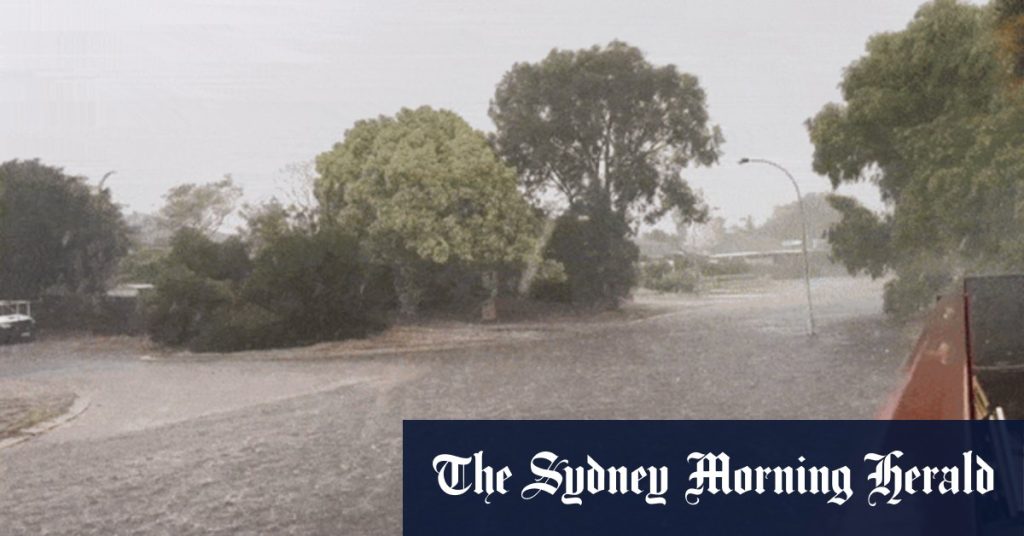Perth experienced a severe weather event on Friday afternoon when more than 100 millimetres of rain fell in just under an hour in the northern suburbs. This led to flooding, trapping people in cars and causing structural damage. The Department of Fire and Emergency Services responded to 56 calls for assistance related to water ingress and flooding in areas such as Clarkson, Butler, Ridgewood, and Nowergup. Crews had to assist stranded individuals in flooded cars in Clarkson, with a total of 60 SES volunteers and Career Fire and Rescue Service personnel mobilized to respond to the emergency calls.
Clarkson was the suburb most affected by the heavy rainfall, with Riverlinks Drive being particularly hard hit. The storm brought April 2024’s rainfall close to the highest ever recorded total for the month in 2008, when 150 millimetres of rain fell. Bureau of Meteorology forecaster Robert Lawry noted that the storm had unexpectedly approached the coast, leading to the intense rainfall levels experienced. Department of Fire and Emergency Services metropolitan north coastal district officer Glenn Hall described the event as “fairly unprecedented,” highlighting the extreme nature of the weather conditions that occurred in Perth.
The rapid onset of the heavy rainfall caught many residents by surprise, leading to significant challenges for emergency response agencies in dealing with the aftermath. The flooding and water ingress into homes in coastal suburbs necessitated swift action from emergency crews to ensure the safety of those affected. Individuals who were trapped in flooded areas had to be rescued by the Career Fire and Rescue Service, underscoring the urgent nature of the situation. The scale of the storm’s impact was particularly notable due to the rare occurrence of such high levels of rainfall in such a short period of time in the metropolitan area.
The intensity of the storm and the resulting flooding highlighted the vulnerability of certain areas in Perth to extreme weather events. The localized nature of the heavy rainfall, focusing on the northern suburbs, posed specific challenges for residents and emergency services in dealing with the aftermath. The response from the Department of Fire and Emergency Services, SES volunteers, and Career Fire and Rescue Service personnel demonstrated the importance of coordinated efforts in managing emergency situations caused by natural disasters. The need for ongoing preparedness and resilience in the face of unpredictable weather patterns was underscored by the unexpected severity of the storm that hit Perth on that Friday afternoon.
The impact of the heavy rainfall and subsequent flooding on infrastructure, including roads and buildings, raised concerns about the city’s ability to cope with such extreme weather events in the future. The damage caused by the storm prompted calls for increased mitigation measures to minimize the risk of similar incidents occurring in the future. The lessons learned from this event highlighted the importance of proactive planning and investment in infrastructure that can withstand the effects of climate-related disasters. The need for community awareness and education about how to respond to emergencies such as flash floods was also emphasized as a key aspect of building resilience in the face of severe weather events.
In conclusion, the severe weather event that struck Perth on Friday afternoon, bringing more than 100 millimetres of rain in under an hour to the northern suburbs, posed significant challenges for residents and emergency response agencies. The unprecedented nature of the storm highlighted the importance of preparedness and coordination in dealing with extreme weather events. The aftermath of the heavy rainfall underscored the need for ongoing efforts to enhance resilience and mitigation measures to reduce the impact of future storms. By learning from this event and implementing proactive strategies, Perth can better address the challenges posed by climate-related disasters and strengthen its ability to respond effectively to emergencies in the future.















